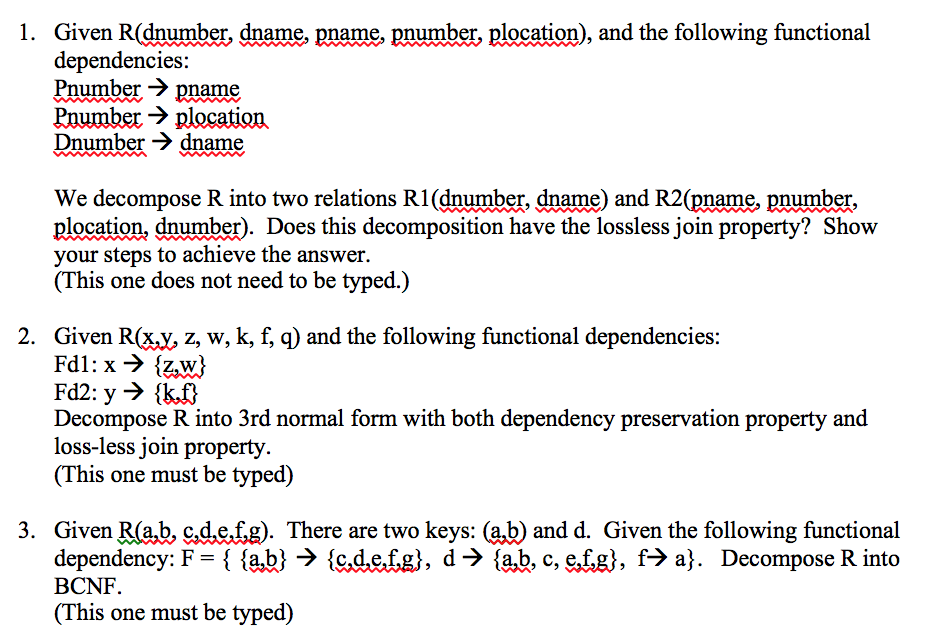Question
1. Given R(dnumber, dname, pname, pnumber, plocation), and the following functional dependencies: Pnumber --> pname Pnumber --> plocation Dnumber --> dname We decompose R into
1. Given R(dnumber, dname, pname, pnumber, plocation), and the following functional dependencies:
Pnumber --> pname
Pnumber --> plocation
Dnumber --> dname
We decompose R into two relations R1(dnumber, dname) and R2(pname, pnumber, plocation, dnumber). Does this decomposition have the lossless join property? Show your steps to achieve the answer.
(This one does not need to be typed.)
2. Given R(x,y, z, w, k, f, q) and the following functional dependencies:
Fd1: x {z,w}
Fd2: y {k,f}
Decompose R into 3rd normal form with both dependency preservation property and loss-less join property.
(This one must be typed)
3. Given R(a,b, c,d,e,f,g). There are two keys: (a,b) and d. Given the following functional dependency: F = { {a,b} {c,d,e,f,g}, d {a,b, c, e,f,g}, f a}. Decompose R into BCNF.
(This one must be typed)

Step by Step Solution
There are 3 Steps involved in it
Step: 1

Get Instant Access to Expert-Tailored Solutions
See step-by-step solutions with expert insights and AI powered tools for academic success
Step: 2

Step: 3

Ace Your Homework with AI
Get the answers you need in no time with our AI-driven, step-by-step assistance
Get Started


